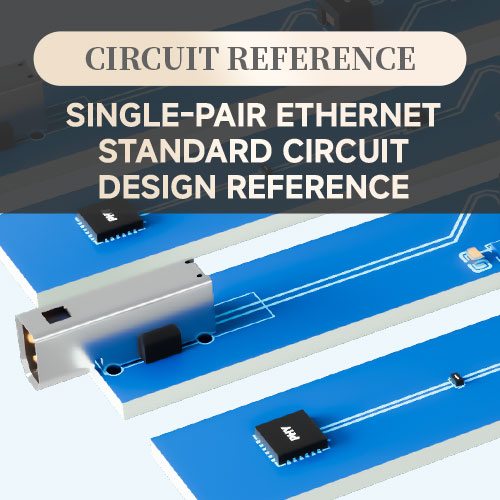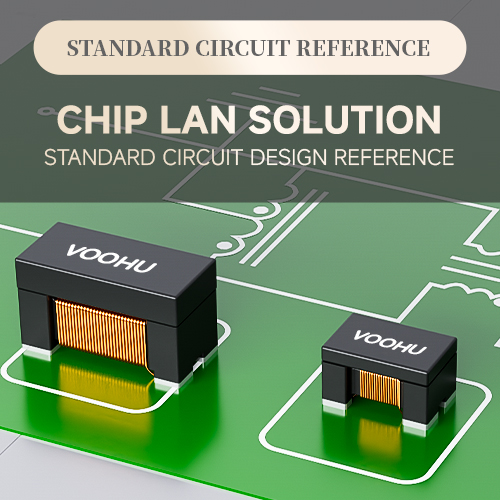
【Application Solution]】Ethernet PoE: PD-side Circuit Design and Lightning Protection Solution
Voohu Electronic Technology provides PoE system solutions, encompassing system-level component supply, custom development support, and in-depth technical capabilities. These solutions are supplemented by evaluation demos and comprehensive test reports, accelerating the entire process from design to mass production.
1. Ethernet communication infrastructure
1.1 Ethernet communication circuit composition
A standard Ethernet communication circuit consists of several key components, forming a complete signal path from the RJ45 connector to the PHY chip:
RJ45 connector: The physical network connection port, providing an 8-pin connector for receiving a twisted-pair Ethernet cable.
Lan transformer (Ethernet transformer): Provides electrical isolation between the RJ45 and the PHY chip, enhancing common-mode rejection and ensuring high-quality signal transmission within the frequency band.
TVS array: Provides protection against overvoltage threats such as lightning surges, electrostatic discharge (ESD), electrical fast transients (EFT), and cable discharge events (CDE).
Ethernet PHY chip: Implements physical layer functions, converting digital signals into analog signals for network transmission.
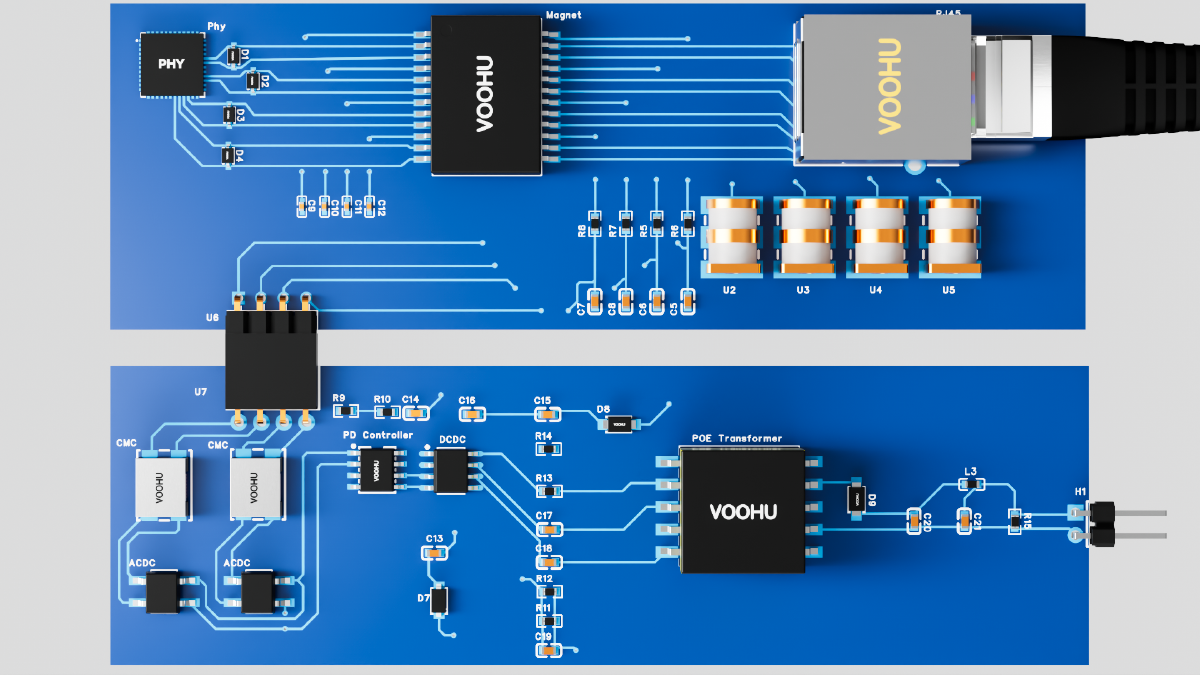
1.2 Communication Path and Protection Mechanism
The standard signal path for Ethernet communication is: RJ45 connector → network transformer → TVS array → Ethernet PHY chip.
In this path, the TVS array plays a crucial protective role. Its low capacitance (typically 0.4pF to 5pF) prevents signal distortion. Wohu's TVS array maintains a stable parasitic capacitance of less than 1.5pF, minimizing circuit interference and providing excellent immunity to ESD, EFT, and lightning strikes.
2. PoE Powered Device (PD) Circuit Structure
2.1 PoE System Overview
Power over Ethernet (PoE) technology allows simultaneous transmission of data and power over a single Ethernet cable, greatly simplifying the power supply requirements for end devices. The PoE system complies with the IEEE 802.3 standard and consists of power sourcing equipment (PSE) and powered devices (PD).
2.2 PoE PD Circuit Components
A complete PoE PD circuit consists of the following core components:
GDTs (Gas Discharge Tubes): Provide primary lightning surge protection and are typically located at the front end of the circuit.
PD controllers: Implement the PoE protocol, detecting, classifying, and negotiating power requirements with the PSE.
PoE power transformers: Specially designed transformers that couple both data signals and DC power.
AC/DC converters: Convert unstable DC input to a stable DC voltage.
DC/DC converters: Further regulate the voltage to the precise level required by the load.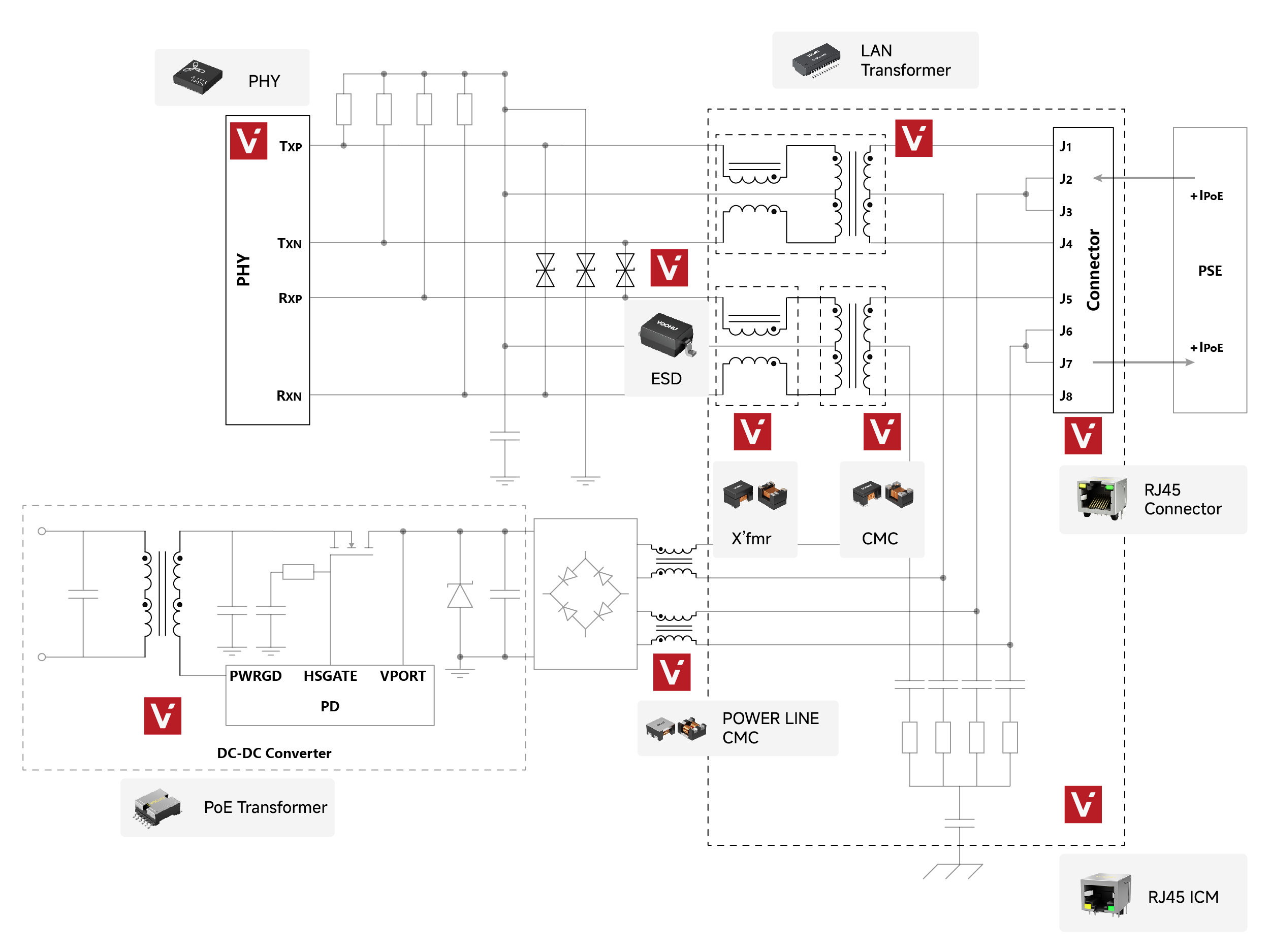
3. Core Component Functions
3.1 Interface and Protection Components
RJ45 Connector and Integrated Transformer
Provides a standard 8P8C network interface
Integrated network transformer and Power over Ethernet (PoE) support
Provides electrical isolation up to 1500V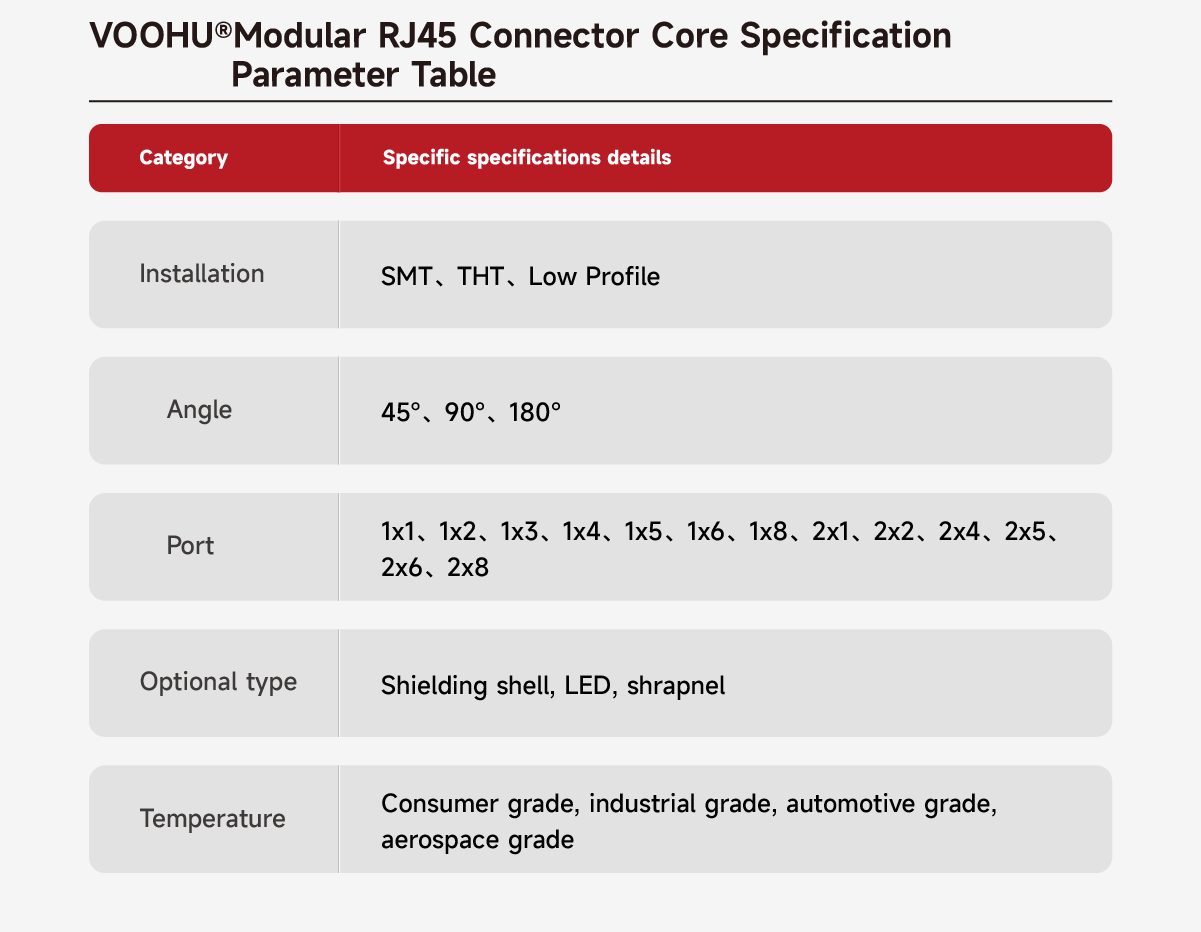
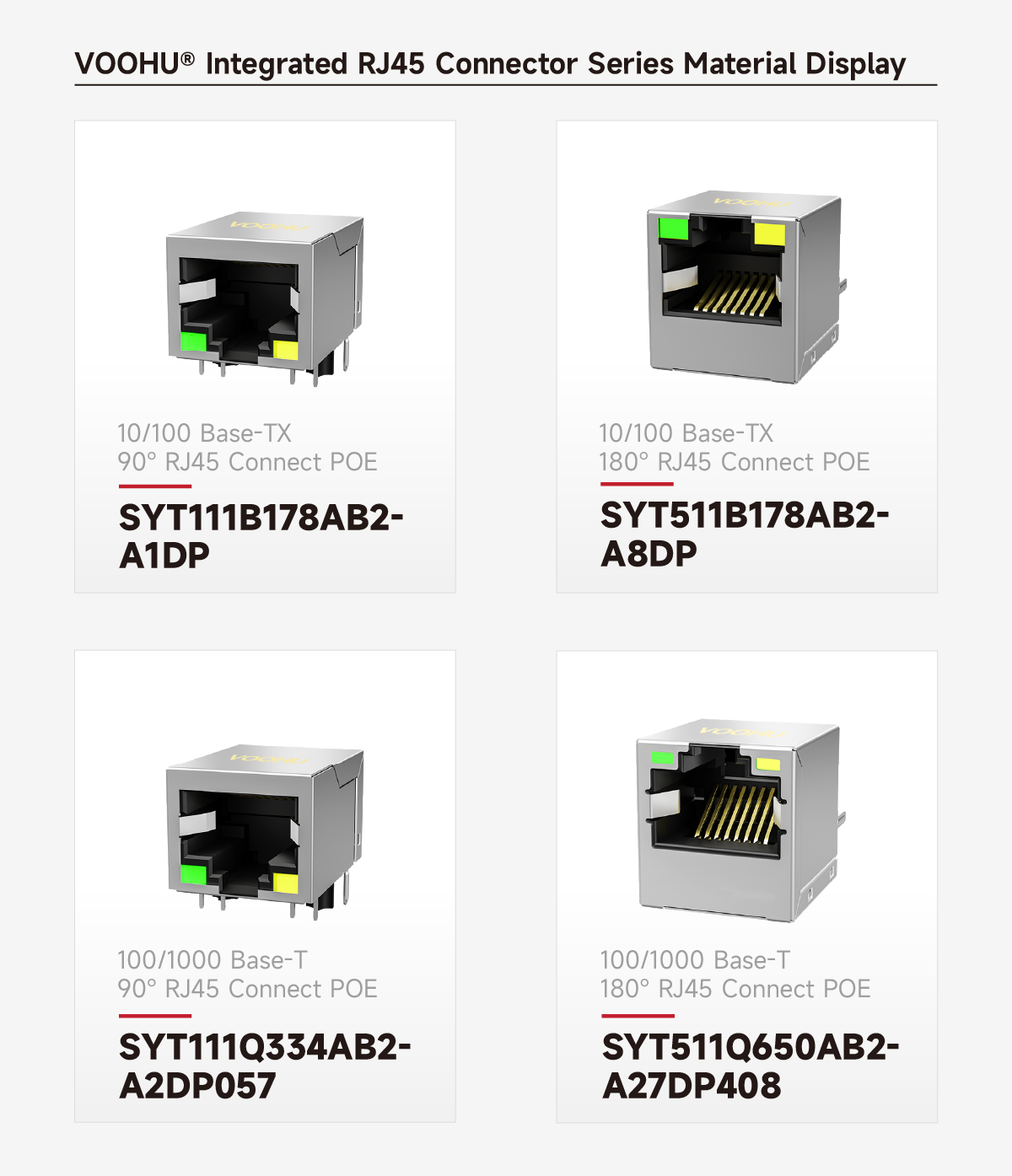
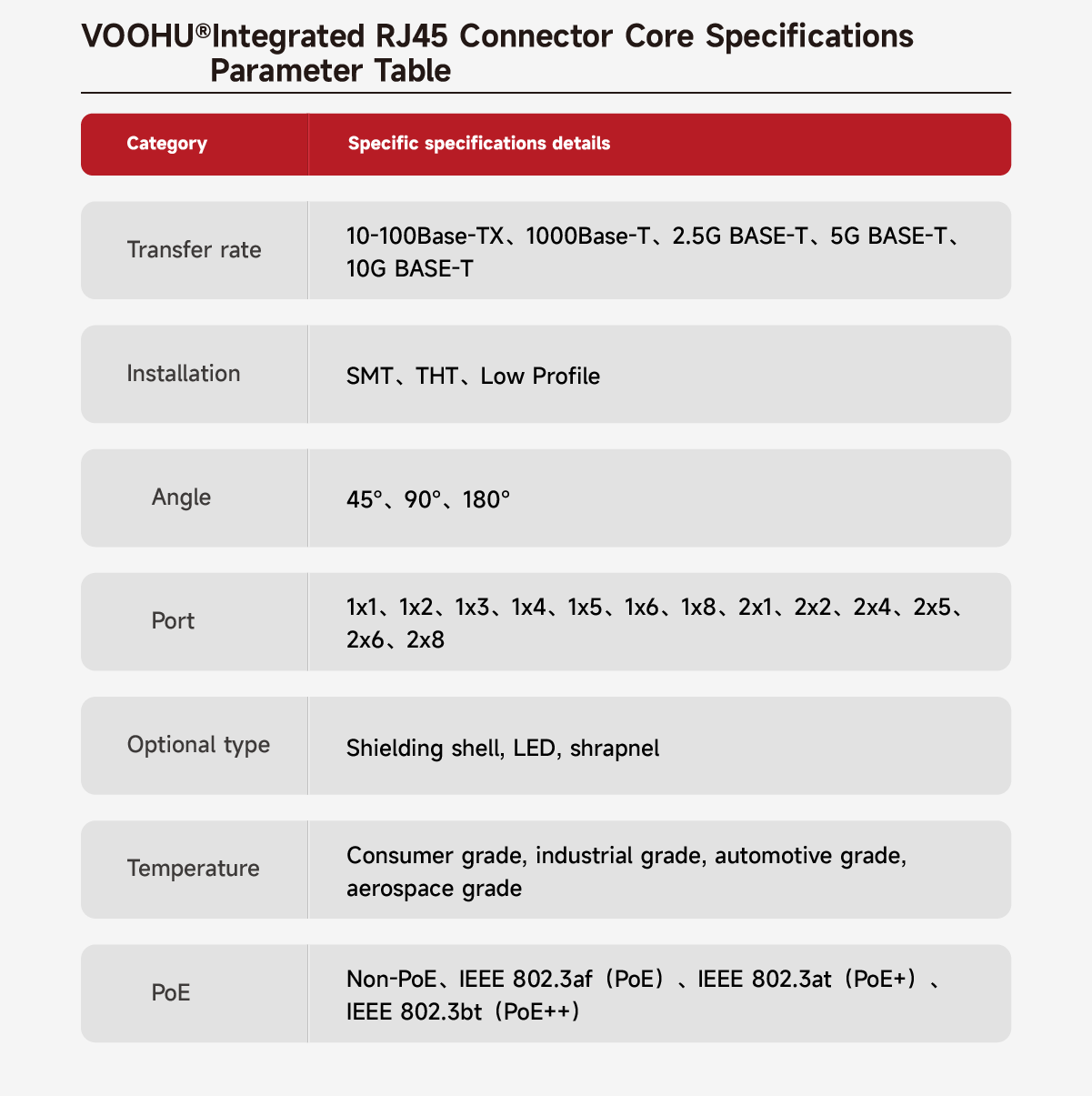
Lan Transformers
Achieve signal isolation and impedance matching, serving as a communication bridge for Ethernet ports. They provide electrical isolation and enhance signal interference resistance, offering higher transmission rates than conventional inductors and effectively suppressing common-mode noise on signal lines.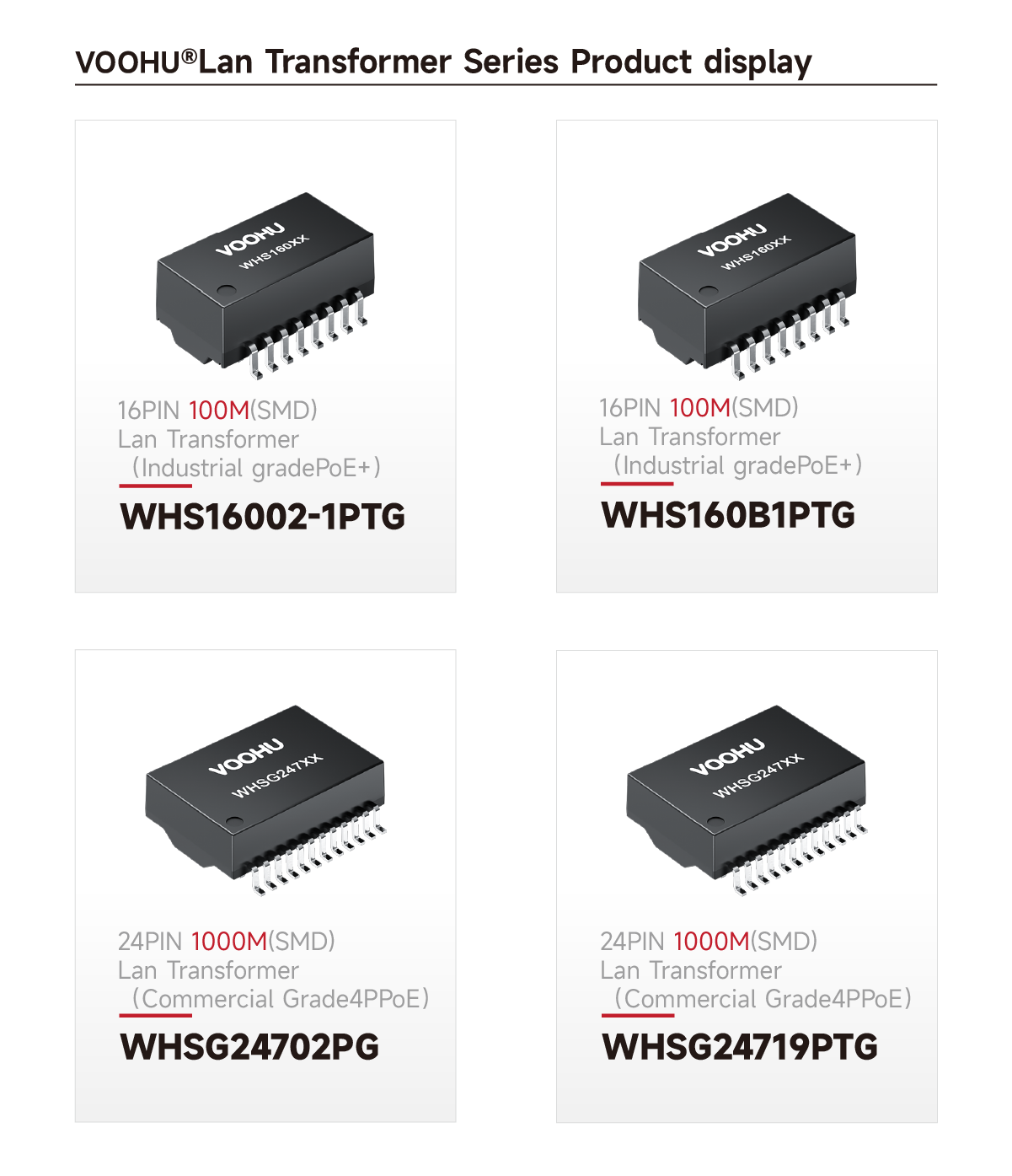
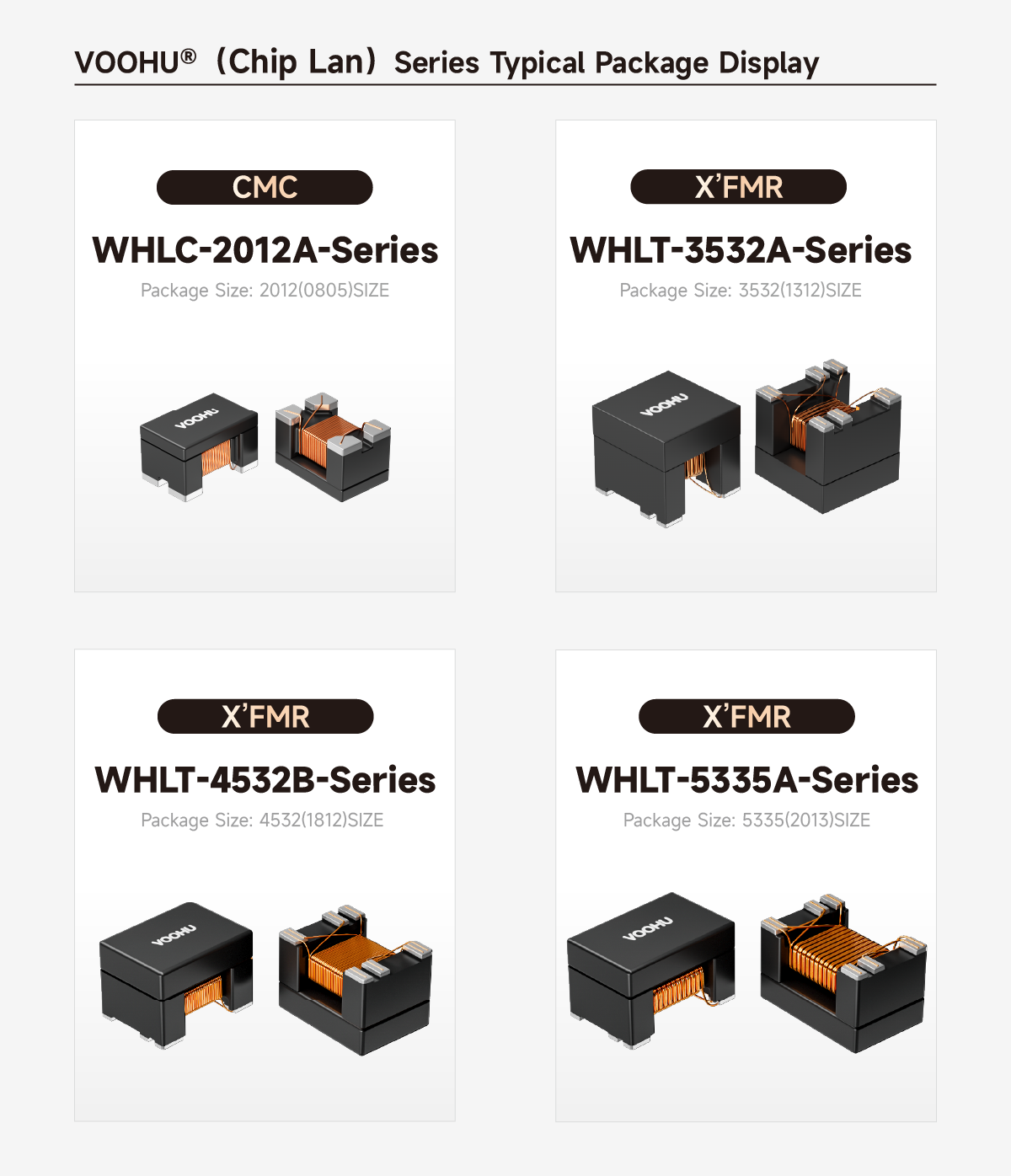
TVS Array Protection Circuit
TVS arrays are crucial in Ethernet port protection strategies, providing the lowest clamping voltage under various overvoltage threats. Voohu TVS arrays offer:
ESD protection: ±30kV (contact discharge) / ±30kV (air discharge)
EFT protection: 40A (5/50ns)
Lightning surge protection: 40A (8/20μs)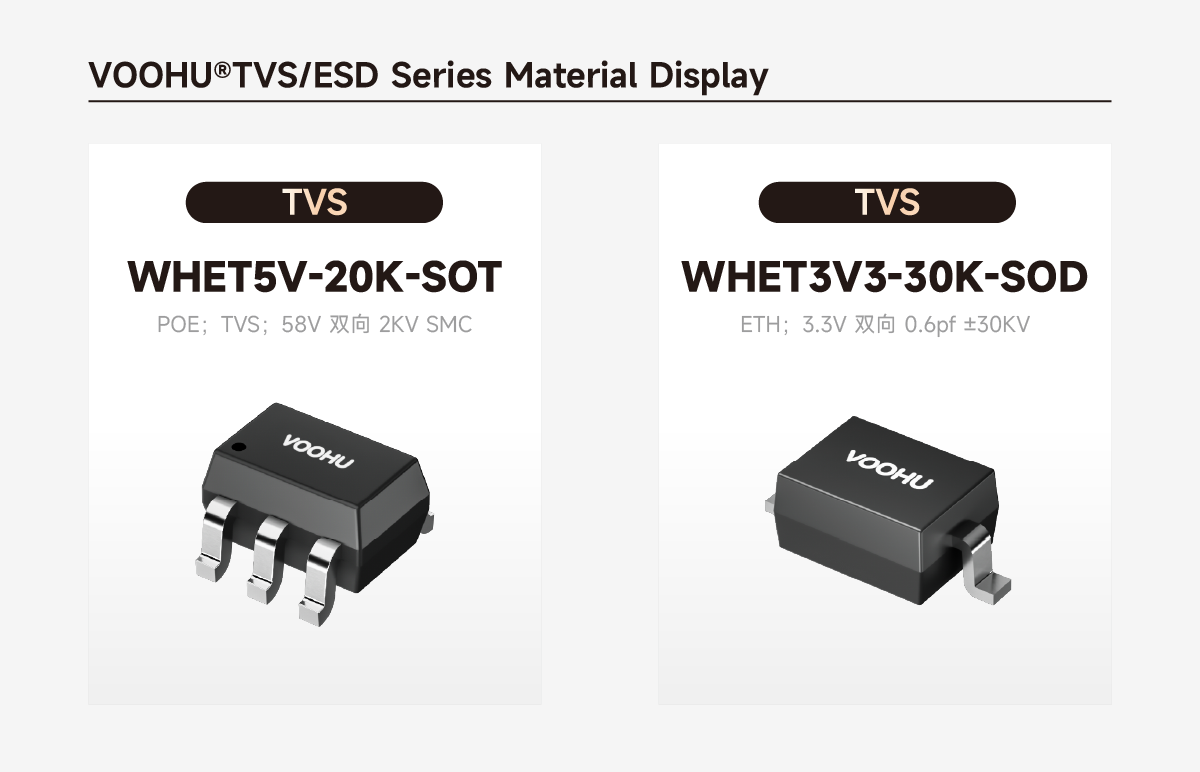
POWER LINE CMC
Achieve signal isolation and impedance matching, serving as a communication bridge for Ethernet ports. They provide electrical isolation and enhance signal interference resistance, offering higher transmission rates than conventional inductors and effectively suppressing common-mode noise on signal lines.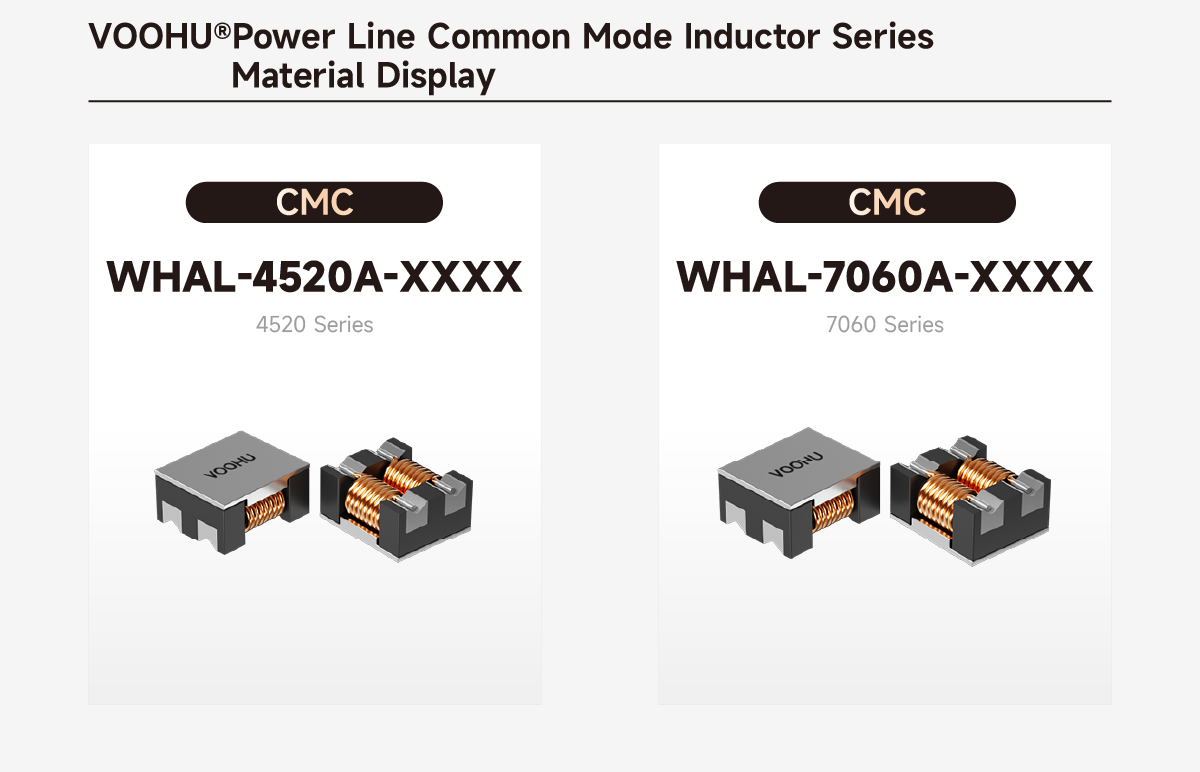
GDTs (Gas Discharge Tubes)
Serving as the first level of protection against high-energy surges, they absorb most of the surge energy. They respond more slowly than TVSs but have greater energy absorption capabilities.
Voohu's POE protection solution utilizes Level 2 protection, ensuring reliable operation and signal integrity over high temperatures. It meets IEC61000-4-2, Level 4, 30kV contact discharge and 30kV air discharge. (Test conditions: IEC61000-4-510/700μs, 40Ω, 6kV, ±5 cycles.)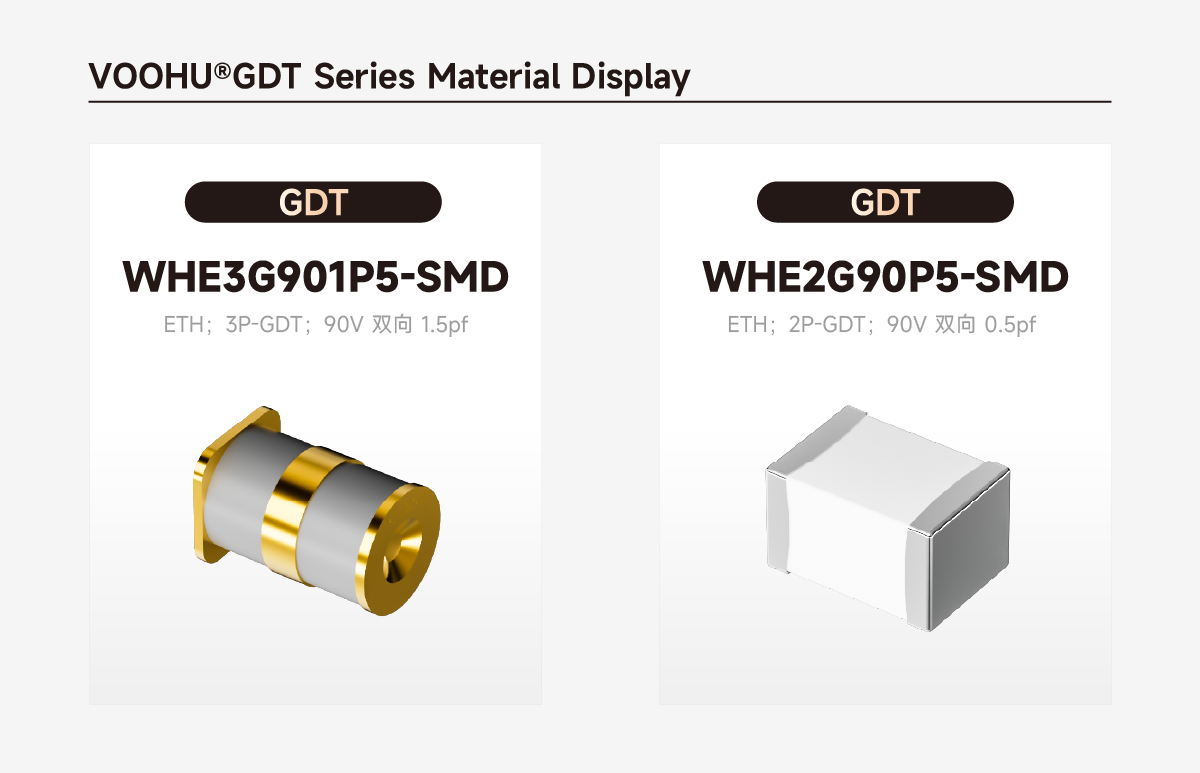
POE power transformer
Provides stable POE power filtering and voltage reduction functions to ensure continuous and stable power output, effectively filters out high-frequency noise and interference, meets IEEE 802.3at/af standards, and supports reliable operation in the full temperature range of -40°C to +125°C.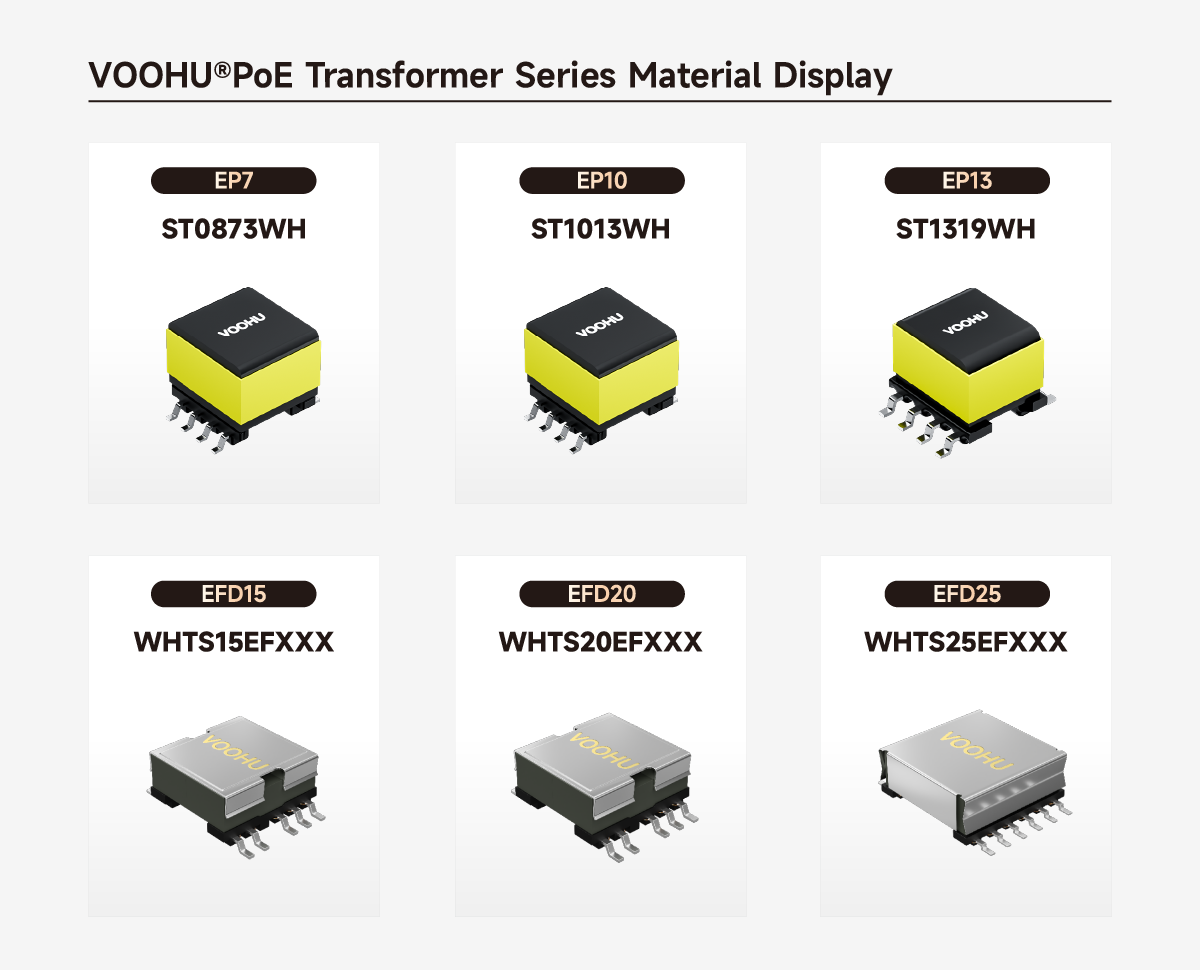
PD Controller
Main functions include:
Detection: Identifies whether the device is an IEEE 802.3 compliant PD
Classification: Indicates the required power level to the PSE
Power-on: Safely connects to power after detection and classification
Monitoring: Continuously monitors input power and implements protective measures
Isolated DC/DC converters
Main functions include:
Voltage conversion: Achieve efficient DC voltage conversion from input to output
Galvanic isolation: Provides a safe electrical isolation barrier between the primary and secondary sides
Regulated output: Maintains a precise and stable output voltage to ensure reliable operation of downstream circuits
Fault protection: Real-time monitoring of system status and implementation of overcurrent, overvoltage, and overtemperature protection
4. PoE Power Conversion Process: From 45V to 3.3V
Stage 1: PoE Input and Rectification
The PSE device provides a 44-57V DC voltage over the Ethernet wire pair.
The PD controller manages inrush current to prevent excessive surges during system startup.
An integrated ideal diode bridge ensures proper connection regardless of polarity.
Stage 2: Isolation Conversion
The primary isolated DC/DC converter converts the unregulated 45V input to a 12V intermediate voltage.
A flyback topology is used for efficient isolation. For example, the TIDA-010083 reference design uses a flyback device with synchronous rectification, achieving efficiencies up to 92%.
1500V basic isolation is ensured to meet safety standards.
Stage 3: Point-of-Load Conversion
A high-efficiency buck converter (such as the TPS62801) is used to convert the 12V to 3.3V.
Synchronous rectification is used to improve conversion efficiency.
Precise voltage regulation (better than ±2%) is provided to meet the stringent requirements of modern electronic components.
5. Practical Circuit Design Considerations
5.1 PCB Layout and Isolation
In Ethernet port design, creepage distance and electrical trace clearance are critical to safety and reliability. Laboratory testing shows that to withstand 2kV transient voltages, FR4 circuit board trace spacing should be at least 25mil.
Isolation Strategy:
Data Channel: Signal isolation achieved through a network transformer.
Power Channel: Power isolation achieved through a DC/DC converter.
Ground Plane: Separate analog and digital grounds, as well as the shield.
Select a high-efficiency conversion topology (such as active-clamp flyback);
Use low-RDS(on) MOSFETs to reduce switching losses;
Design appropriate copper areas and thermal vias;
Use multi-stage power conversion to optimize overall efficiency.
Ethernet communication and PoE power supply circuits are highly integrated mixed-signal systems that skillfully combine high-frequency data communication with efficient power transmission. The conversion process from an unstable 45V PoE input to a stable 3.3V output involves multiple stages of sophisticated power management, each presenting its own unique design challenges and solutions.
Through appropriate component selection, careful PCB layout, and rigorous protection strategies, reliable, efficient, and standards-compliant Ethernet PoE power supply devices can be constructed to meet the growing demand for simultaneous data and power transmission in modern connected devices.
VOOHU's Value Commitment - Choose VOOHU , Truly Reliable
Voohu's systematic solutions go beyond simply matching materials. We offer three key value propositions:
1. Customized Service: We provide customized hardware design and manufacturing services based on specific customer needs. Whether it's a specialized application scenario or personalized functional requirements, we can meet them.
2. One-Stop Procurement: Customers can source all necessary hardware products from us, including RJ45 connectors, network transformers, ESD protection devices, and Ethernet port PHYs. One-stop procurement is not only convenient and fast, but also reduces costs.
3. Technical Support: We offer comprehensive technical support, from hardware selection to circuit design, from testing and verification to production and manufacturing. Our technical support team, comprised of experienced engineers, can quickly respond to customer needs and resolve issues.
From its founding in 2018 to its international expansion in 2025, Voohu Electronics has become a reliable partner to over 1,000 businesses thanks to its commitment to exceptional quality, competitive pricing, attentive service, and reliable delivery.
If you're also looking for a communication electronic component supplier that's hassle-free, cost-effective, and hassle-free, consider Voohu. After all, with over 100 publicly listed companies, you can't go wrong.
"Choose Voohu. Truly reliable." This isn't just a slogan; it's the trust of over 1,000 customers over the past eight years.
Newsletter subscription
Subscribe to our newsletter and stay updated on the latest information of our company and product.
Name
|
I agree that the information that I provide will be used in accordance with the terms of Voohu International Inc. Privacy & Cookies Policy










